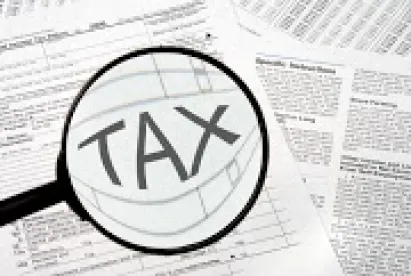On September 6, the Internal Revenue Service (“IRS”) released Revenue Procedure 2018-47 (the “RIC Rev Proc”) which provides that, a repatriation deemed to have been received by a registered investment company (a “RIC”) under Section 965 (enacted as part of the 2017 tax reform act, commonly known as the “Tax Cuts and Jobs Act” or “TCJA”) is treated as a “specified gain.” As a result, the amount of the deemed repatriation need not be distributed by the RIC until 2018 in order for the RIC to avoid the 4 percent excise tax imposed under Section 4982(a).
On September 13, the IRS released Revenue Procedure 2018-48, which provides that “global intangible low-taxed income” (“GILTI”), Subpart F income and “passive foreign investment company” (“PFIC”) inclusions of a real estate investment trust (a “REIT”) are treated as qualifying income for purposes of the 95 percent gross income test, and that certain REIT foreign exchange gains relating to distributions of previously taxed earnings and profits (“PTI”) are not included in gross income for purposes of the 95 percent gross income test.
Read further for additional background and more detail on these developments.
The RIC Rev Proc
Background on the RIC Excise Tax
A RIC is subject to a 4 percent excise tax on the excess of its “required distribution” for the calendar year over its “distributed amount” for the calendar year.[1] The required distribution amount generally equals the sum of 98 percent of the RIC’s ordinary income for the full calendar year, plus 98.2 percent of a RIC’s capital gain net income for the one-year period ending on October 31 of the calendar year, further increased by any prior year’s shortfall. The ordinary income component of the required distribution generally includes any Subpart F income inclusions, whether or not received in cash, resulting from a RIC’s controlled foreign corporation (“CFC”) investments. Also, a special rule provides that certain non-periodic items of ordinary income and loss incurred after October 31 of the calendar year, called “specified gains and losses,” may be deferred until the following calendar year – e.g., for excise tax purposes, “specified gains and losses” arising after October 31, 2017 can be included in the RIC’s required distribution for calendar year 2018, instead of 2017. “Specified gains” are defined by the statute as generally ordinary gain from the sale or exchange of property[2] but not Subpart F inclusions. The TCJA did not address the effects of Section 965 inclusions or deductions for purposes of this excise tax.
Section 965’s Effect on a RIC’s Required Distribution
Section 965 was one of many major changes to the taxation of U.S. taxpayers that hold interests in non-U.S. entities enacted by the TCJA. In very general terms applicable to RICs, Section 965(a) increases a RIC’s Subpart F income inclusion where the RIC is a “United States shareholder” of a “deferred income foreign corporation” (“DFIC”) to the extent the DFIC has “accumulated post-1986 deferred foreign income” (“DFI”) and such DFI is attributable to such United States shareholder. In equally broad terms, Section 965(b) allows the RIC to reduce its Section 965(a) inclusion if the RIC is a United States shareholder of one or more “E&P deficit foreign corporations.”[3] For a DFIC with a calendar U.S. taxable year, the RIC’s Section 965(a) income inclusion for the RIC arises in the DFIC’s taxable year ended December 31, 2017. (This description is equally applicable to REITs; see below for the relevance of Section 965 under the REIT Rev Proc).
As enacted in the TCJA, a RIC’s Section 965(a) inclusion generally would be treated as ordinary income for purposes of the excise tax calculations, and measured at the end of the 2017 calendar year.[4] The absence of a correlative TCJA change to the excise tax statute left affected RICs with the impossible administrative burden of making a Section 965(a)-adjusted required distribution for 2017 on the same date the underlying Section 965(a) inclusion was nominally determined (and in essentially all cases, before it could be actually determined). Additionally, the excise tax for 2017 was due on March 15, 2018, in many cases before RICs were in a position to assess their Section 965(a)-adjusted required distribution for 2017. Predictably, numerous taxpayers and industry groups requested the IRS consider relief from this result.
Effect of the RIC Rev Proc
The RIC Rev Proc announced that the IRS and the Treasury Department have concluded that it is in the interest of sound tax administration to allow RICs additional time to make required distributions in respect of Section 965(a) inclusions. As a result, the RIC Rev Proc states that the IRS will not challenge a RIC that treats its Section 965 inclusion and deductions as “specified gains and losses,” thereby allowing the RIC to defer those items of gain and loss to the RIC’s 2018 excise tax year.
Notably, the Section 965 inclusion results in ordinary income recognition for a RIC in 2017 in a manner analogous to the ordinary income recognition which would have been the result of the RIC selling all of the underlying stock of the foreign corporation in 2017 (e.g., by application of Section 1248) and which ordinary income would unambiguously have been specified gains for purposes of the excise tax. While the RIC Rev Proc does not specifically cite Section 1248 (or indeed any statutory authority or analogy), this appears to provide support for a taxpayer taking the position permitted by the RIC Rev Proc, since the effect is to leave a RIC that treats its Section 965(a) inclusion as specified gains in roughly the same excise tax position as if it had sold the underlying DFIC stock in November or December of 2017.
The REIT Rev Proc
Background on the 95 Percent Gross Income Test
In general, at least 95 percent of the REIT’s gross income must be derived from certain sources (generally, passive income sources) specifically identified under Section 856(c)(2) (the “95% gross income test”) to maintain REIT qualification. While numerous specific categories of REIT gross income are defined by statute either as qualifying income or as excluded from gross income for purposes of the 95% gross income test, no formal guidance on the treatment of certain fundamental categories of foreign income derived by a REIT—most significantly, Subpart F income inclusions under Section 951(a)(1), certain PFIC inclusions under Sections 1291, 1293 and 1296, and foreign exchange gains recognized under Section 986(c) with respect to distributions in respect of previously taxed earnings and profits, also known as “PTI” – existed prior to the REIT Rev Proc. Instead, an affected REIT had to seek a private letter ruling in which the IRS exercised its statutory discretion to treat these amounts either as qualifying gross income or as excluded from gross income for the 95% gross income test.[5]
Treatment of GILTI and Section 965 Income Derived by REITs
A REIT is required to include in gross income its Section 965(a) inclusion in the same manner as broadly described above. Additionally, the TCJA included a specific provision in Section 965 treating that portion of a REITs Subpart F income resulting from Section 965 (but only that portion) as excluded from gross income for purposes of the 95% gross income test.[6]
The TCJA’s foreign income provisions also added new Section 951A, which requires a U.S. shareholder of a CFC to include in gross income its “global intangible low-taxed income” (“GILTI”) for the taxable year. In general terms, GILTI is the U.S. shareholder’s pro rata share of a CFC’s earnings (excluding its Subpart F income and certain other income items) in excess of 10 percent of allocable depreciable tangible property basis (reduced by certain related interest expense), irrespective of whether corresponding cash distributions are made by the CFC. Any subsequent actual distributions of such earnings are not subject to U.S. federal income tax.
Unlike with respect to Section 965 inclusions, the TCJA did not specify whether, for purposes of the 95% gross income test, GILTI inclusions either are treated as includible or excludible from gross income of the REIT or are treated as qualifying income of the REIT. Thus, as enacted, the TCJA would have effectively added GILTI to the list of foreign income items for which an affected REIT might need to seek IRS relief for 95% gross income purposes.
Effect of the REIT Rev Proc
The REIT Rev Proc expands the list of qualifying items of income for the 95% gross income test to include: (i) Subpart F income (other than Section 965(a) inclusions, already statutorily excluded), (ii) GILTI under Section 951A and (iii) certain required inclusions under the passive foreign investment company (“PFIC”) regime, including amounts related to excess distributions, “qualified electing fund” inclusions, and PFIC mark-to-market election inclusions.[7] The REIT Rev Proc also announces REIT income inclusions arising from foreign exchange gain with respect to distributions of PTI[8] are excluded from gross income for purposes of the 95% gross income test. The REIT Rev Proc is effective for taxable years beginning after September 13, 2018, but REITs may choose to apply it to any prior taxable year.
[1] Section 4982(a). All references to Section are to the Internal Revenue Code of 1986, as amended.
[2] Specified gains also include certain foreign exchange gains and gains from the mark-to-market election of a passive foreign investment company. Specified losses are effectively the items of deduction corresponding to specified gains. See Section 4982(e)(5)(2)(B).
[3] All of the terms in these two sentences in quotation marks are defined in great detail in the statute and amplified in recently promulgated regulations. A complete description of the calculation of a RIC’s Section 965(a) inclusion is unnecessary to an understanding of the RIC Rev Proc.
[4] The Section 965 income allocation is includible in the first taxable year of the U.S. Shareholder ending on or after December 31, 2017; RICs (and REITs) are statutorily required to adopt the calendar year as their taxable year.
[5] See Sections 856(c)(5)(J) and 856(n)(3)(C).
[6] See Section 965(m)(1)(A).
[7] See Sections 1291(a), 1293(a) and 1296(a).
[8] See Section 986(c).





 />i
/>i
